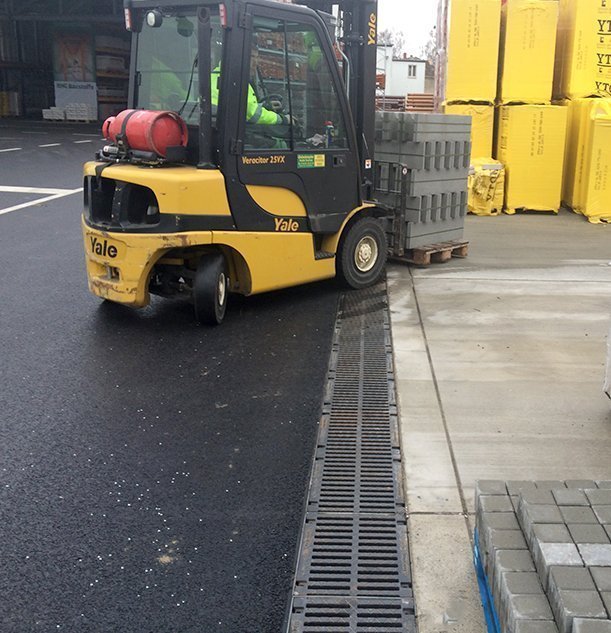Load class according to EN 1433
Load class according to EN 1433
up to F 900
up to F 900
up to F 900
up to E 600
up to F 900
Nominal width | System size
Nominal width | System size
1000, 2000, 3000, 5000, 8000, 10000
NW 200 & 300
100, 150, 200, 300, 400, 500
100, 150, 200, 300, 400
300 – 500
Materials of the lower parts
Materials of the lower parts
Modified polypropylene (PP), 100 % recycled composite
Modified polypropylene (PP), 100 % recycled composite
Fibre-reinforced concrete
Modified polypropylene (PP), 100 % recycled composite
Fibre-reinforced concrete or polypropylene (PP)
Angle housing
Galvanised steel or ductile iron edge rail with 40 x 40 mm insertion depth
Moulded as an integral part of the channel body
Depending on the version with FASERFIX or RECYFIX:
Galvanised steel or cast iron frame with 40 x 40 mm insertion depth
Grating variants
Ductile iron grating with lateral concrete anchoring
– Ductile iron gratings
– GUGI ductile iron gratings
Special characteristics
– Radial installations possible
– Large channels for retention
– Channel run without slotted top achievable, for example, under planted areas
– Cable installations can be threaded though throat voids of the channel
– Material combination of recycled PP and ductile iron for adaptability on the construction site and robustness
– Side wings for optimum connection to the concrete surface
– No screws and loose parts on the surface
– Connection between channel and grating encased in concrete for extra safety
– SIDE-LOCK, boltless locking system
– 16 fixing points for grating/metre
– Channel and cover = one component
– Self-centring screw –> automatically finds the correct position
– Polypropylene channel body can be easily machined on site
– Rainwater treatment by surface filtration
– DIBt approval
– Proprietary treatment system: CIRIA SuDS Manual C753 chapter 14
Gradient
– Constant depth
– Stepped fall
– Stepped fall (at NW 200)
– Constant depth
– Constant depth
– Built-in fall (150, 200, 300)
– Stepped fall
– Constant depth
– Stepped fall














